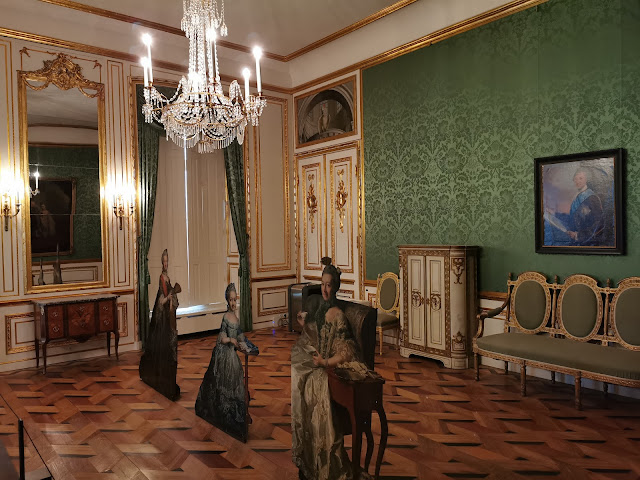Thursday, June 15, 2023
Ludwigslust (02/10/2022)
On the first October weekend, coming back from Hamburg to Berlin, we decided to stop and visit the town of Ludwigslust, halfway between the two cities. Once we reached the city's train station we got on foot and continued on foot through the town. After a bit of walking, we then reached the main monument, Schloss Ludwigslust, known as the Versailles of the North. The Palace began as a simple hunting lodge for Prince Christian Ludwig, the heir of the Duke of Mecklenburg-Schwerin. It was just 36km south of the ducal capital, Schwerin, and the Prince passed most of his time at the residence, which he called Ludwigslust, or Ludwig's joy. In 1765, Luwig's son, Frederick II, Duke of Mecklenburg-Schwerin, made Ludwigslust the capital of the duchy instead of Schwerin and in the years between 1772 and 1776 had a new residence built, thus making the little town turn into a royal residential city. The Late Baroque palace presents a large central structure in the form of an E. Behind it is a large English landscape garden while in front it opens up with a large square and cascade towards the town church and the rest of the town. Once we reached the building we proceeded to buy the entry ticket and visited its lavish interior. Mostly neoclassical in style, the rooms had original historical decor and furniture, sometimes from other palaces and castles in the surroundings, as well as a nice collection of paintings including some vedute of Venice. We walked through several rooms, including the duchess' bedroom, and the Goldener Saal, a huge two-story hall occupying both main floors located in the central part of the palace which can be seen from the exterior and lavishly decorated as it functioned as a festival and ballroom. After visiting the interior, we then came out once again and went on to walk around the large park around the palace. Leaving the main structure behind us, we walked along the main avenue lined by trees until we then reached another structure, the Schweizerhaus. Continuing onwards we then walked alongside a nice canal with little waterfalls before we reached the neogothic church of St. Helena and Andreas. After the walk around the park, we were back at the palace and decided then to visit the rest of the town. We walked to the nearby Stadkirche, located at the end of a symmetrical square formed by the houses that once served as living quarters for the palace's staff. The church was built around the same time as the palace and is baroque in style. Its interior featured a large fresco behind and above the main altar representing the Annunciation to the shepherds. After visiting the nice church we then moved on and walked through the geometrical streets of the city center, passing by some nice 18th and 19th-century houses. Walking along main and minor streets we then eventually headed back to the train station from where we then took our train to Berlin.
Subscribe to:
Post Comments (Atom)












No comments:
Post a Comment